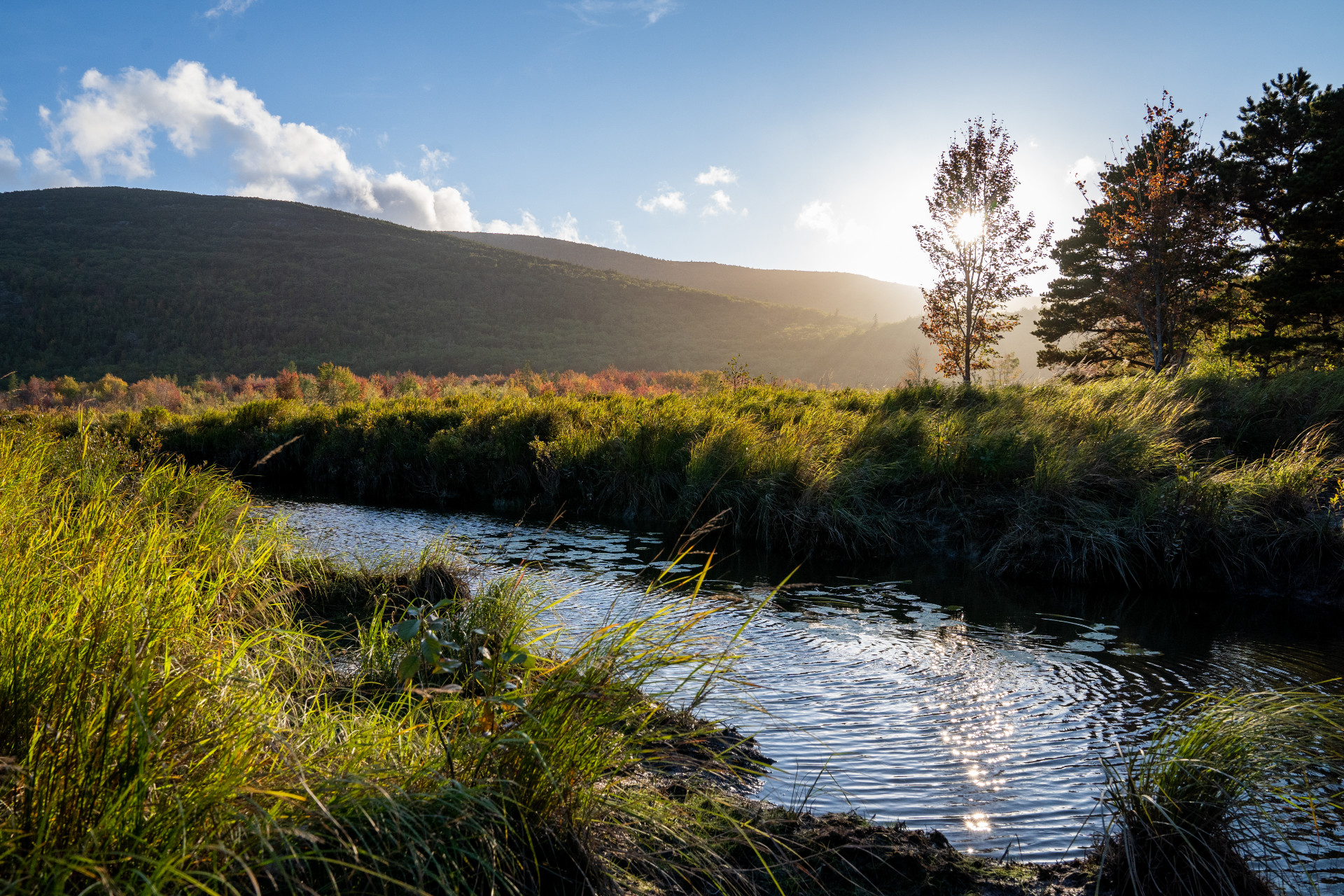NPS Invites Public Comment on Restoration of Great Meadow in Acadia
November 7th, 2022
November 7th, 2022

Fall colors are illuminated by the evening sun in Great Meadow. (Photo by Emma Forthofer/Friends of Acadia)
BAR HARBOR, MAINE – The National Park Service will hold a public scoping meeting on Wednesday, November 16, 2022, at 7 pm to get input on its plan to restore the 116-acre Great Meadow wetland in Acadia National Park. The meeting will be held at the YWCA of Mount Desert Island located at 36 Mount Desert Street in Bar Harbor, Maine. The meeting will provide information on the need for the plan and proposed actions, and an opportunity for the public to ask questions.
Comments must be submitted to National Park Service’s Planning, Environment and Public Comment website at go.nps.gov/GreatMeadowPlan. Comments will be accepted from November 11 through December 10, 2022.
The purpose of the restoration plan is to improve the natural functions and species diversity of the wetland, while reducing damage and maintenance to park facilities. The project includes replacing the culvert at the outflow of the Great Meadow, restoration of Cromwell Brook, removal of non-native invasive plant species with native plant restoration, targeted wetland restoration, and visitor-use improvements to increase accessibility and enjoyment of the area.
“Great Meadow is vital to the ecological health and scenic beauty of the Sieur de Monts area of Acadia National Park, and the restoration plan will help remedy the problems of the past to restore the Great Meadow for future generations,” said Superintendent Kevin Schneider. “We encourage you to get involved in the process and add your voice.”
Long-term monitoring of Great Meadow has identified a high abundance of invasive plants, hydrological disturbance, and external stressors from generations of development, which has harmed its ecological and hydrologic functions.
The development of buildings and roads in Great Meadow have altered the natural function of the wetland and created conditions for disturbance tolerant and invasive plants species to thrive. The existing culvert is undersized and restricts the natural flow of Cromwell Brook and migration of aquatic species. During high intensity rain events, floodwaters backup upstream of the culvert, contributing to flooding of the Sieur de Monts area.